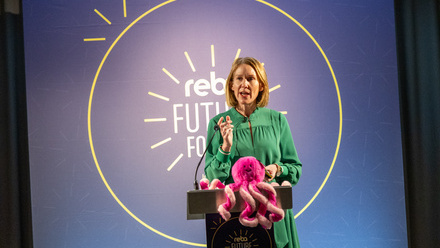Six ways to implement more flexible working and make it work culturally

1. Trust your employees
Trust is hard to build, especially when talking about remote flexible working. For flexibility to be genuine, employees need to be fully trusted to keep up their end of the bargain. Constant checking in and monitoring of hours worked is only going to alienate staff and have the adverse effect.
It might be hard to accept in the beginning but senior leadership needs to give their staff the room to work flexibility and trust them to keep up the usual workload. This will only reward you in the long run through a stronger relationship with your staff.
2. Model flexibility from the top down
Effective cascading of messages and new working practices always works best when they’re communicated from the top down. Flexible working is no different.
For some, fully flexible working might be a bit of a shock to the system. If you’re in senior management and you need to reschedule a meeting to do the school pick up, make it clear that that’s what you’re doing. This will help to normalise flexible working and demonstrate what’s acceptable and what’s not.
3. Set clear objectives
This is something that has always been important but never more so than in the present climate, with flexible and remote working. Setting clear objectives means that people can stick to them and be held accountable when they’re doing things that aren’t working towards business aims. These objectives need to be set at a company and personal level. Even setting an objective around adjusting to flexible working can help it to be embedded culturally.
4. Communication is key
At times like these, there’s no such thing as over communication. Just setting clear objectives isn’t enough, they need to be communicated and measured effectively to make sure everyone is on the same page. You can’t hold someone accountable to a goal without making sure they understand what they’re aiming for in the first place. What’s more, with remote working and new hires, there needs to be an effective ‘source of truth’ for all information relating to the business. Don’t let a lack of communication lead to employee speculation or further distance between you and your workforce.
5. Know what to do when it does go wrong
Inevitably, a small few may use flexibility in the wrong way. It’s impossible to try and completely mitigate this from happening. Instead of just trying to ensure this does not happen, make sure there’s effective processes in place for when someone is abusing their position. This will demonstrate that you’re serious about flexible working and the trust you’re placing in your workforce.
6. Don't forget about benefits
Many employee benefits are geared towards the traditional 9-5, office-based working environment. Benefits such as season passes, cycle to work schemes, and free fruit and yoga classes do not hold such significance in a flexible or remote workplace. Benefits now need to reflect the flexible environment you’re trying to create.
One of the key ways organisations can do this is by providing access to wages as they’re earned. Inflexibility around wages means that 3.1 million people turn payday lenders every year, according to the Financial Conduct Authority's Financial Lives Survey. It’s one of the last vestiges of the traditional workplace and providing more autonomy over wages earned means you can add to the empowerment and trust of flexible working.
If organisations are genuine about moving to more flexible working practices then there are plenty of ways for them to embed it culturally.
This article is provided by Wagestream.
Supplied by REBA Associate Member, Stream (FKA Wagestream)
Wagestream’s financial wellbeing platform makes work more rewarding for 3 million people.







